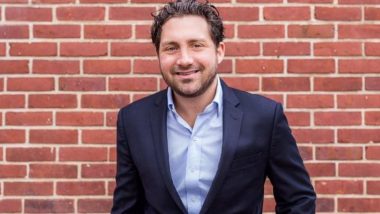By the end of your morning coffee the opiate epidemic will take a life… or two. Everyday 150 families are forever altered from losing a loved one in the fight against addiction. Annually, over 50,000 people will lose their lives; more than car accidents and gun related deaths combined.
When sitting down with Dr. Surasky to discuss this opioid crisis, he ended up reverse engineering how big pharmaceutical companies have and continue to profit off of the death and suffering of their clients. Most people do not have the luxury of weighing the opportunity cost of alleviating their pain versus receiving a life sentence of addiction for it. When you're desperate, taking a pill that makes everything go away seems like a wonderful saving grace in the moment; however, a more insidious development is taking place inside the patient's limbic system. This portion of the brain is being hijacked in a way to mold its base desires linked for survival to those chemical releases brought on from those drugs. Once this happens, the pharmaceutical company is betting it has a new customer for the rest of their life.
Dr. Russell Surasky, FAAN, ABAM, ABPM, is a triple board-certified neurologist. He is board certified in neurology by the American Board of Psychiatry & Neurology and in addiction medicine by the American Board of Addiction Medicine and the American Board of Preventive Medicine. He is the only physician in the United States with these credentials.
Purdue Pharmaceutical company was one of the major driving forces of this drug epidemic. Purdue Pharma, a privately held pharmaceutical company, made a pain-reliever called Oxycontin in the mid 1990’s. Purdue marketers realized early on that if they could get doctors to prescribe this opiate not just for cancer-related pain but rather for everyday aches and pains, the company’s profits would skyrocket. They did this by creating a massive, fraudulent campaign in which they downplayed the addiction risk of Oxycontin. Purdue’s representatives told doctors that if their patients had pain and did not have a history of addiction, these drugs would not cause them to become addicted. Oxycontin then became the most profitable pain medication ever made. Purdue made $32 billion from this one drug. Addiction rates soared and along with it came untold suffering and death.
Dr. Surasky explained: “What Purdue realized was that if they could get doctors to prescribe opiates not just for cancer-related pain but rather for everyday aches and pains, then their profits would skyrocket,” Surasky says, “They did this by creating a massive fraudulent campaign in which they downplayed the addiction risk of OxyContin.” Another major factor was that the DEA was more interested in punishing doctors than retraining them with the tools required to prescribe intelligently. This crack down on doctor shopping and opioid prescribing resulted in those already addicted to turn to the next most cost effective option, heroin.
Three out of four heroin users actually began their tragic path with a prescription opiate drug from their doctor. After it became apparent to the public that this was fast becoming a problem and whistle blowers started exposing the truth, it was already too late. Health care practitioners had already created mass dependencies. In an attempt to do the wrong thing for the right reason they had knowingly or unknowingly sparked rampant drug abuse.
Addiction is a complex problem that requires a multi faceted solution. An effective combination of detoxification (Lucemyra & others), Vivitrol treatment and reduction of stress to the upper spine and limbic brain are some of the innovative tools employed by Dr. Surasky.













 Quickly
Quickly


